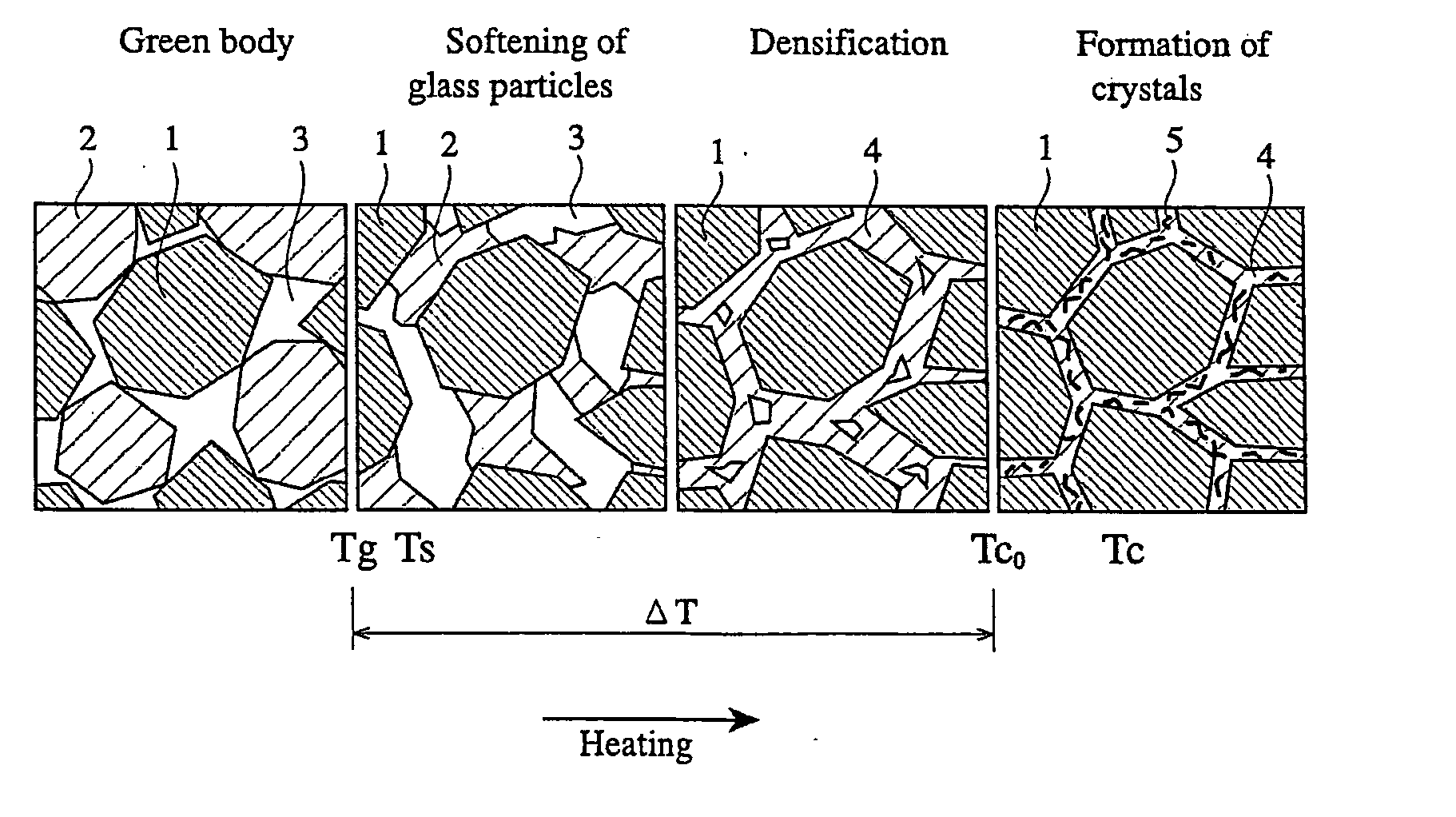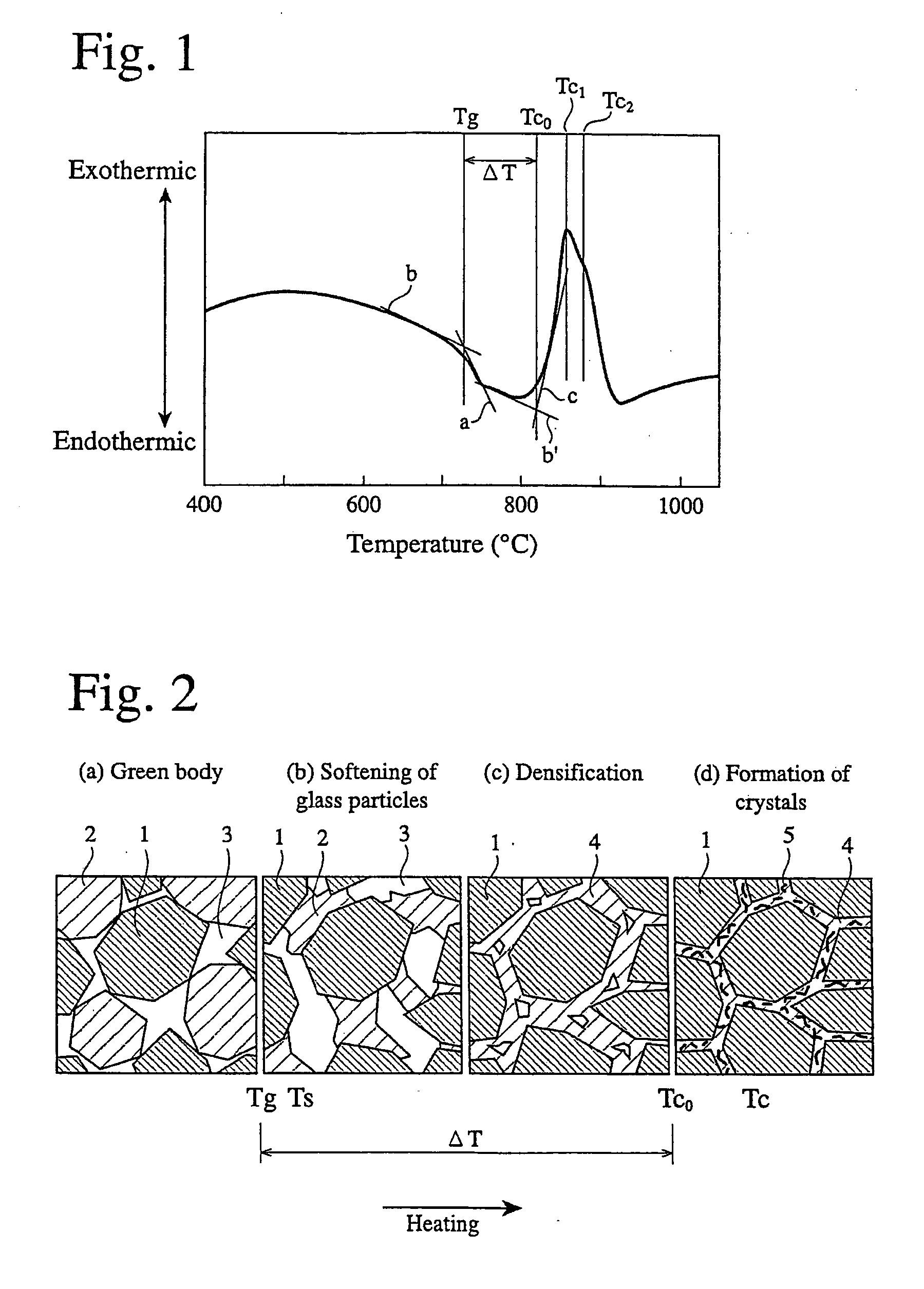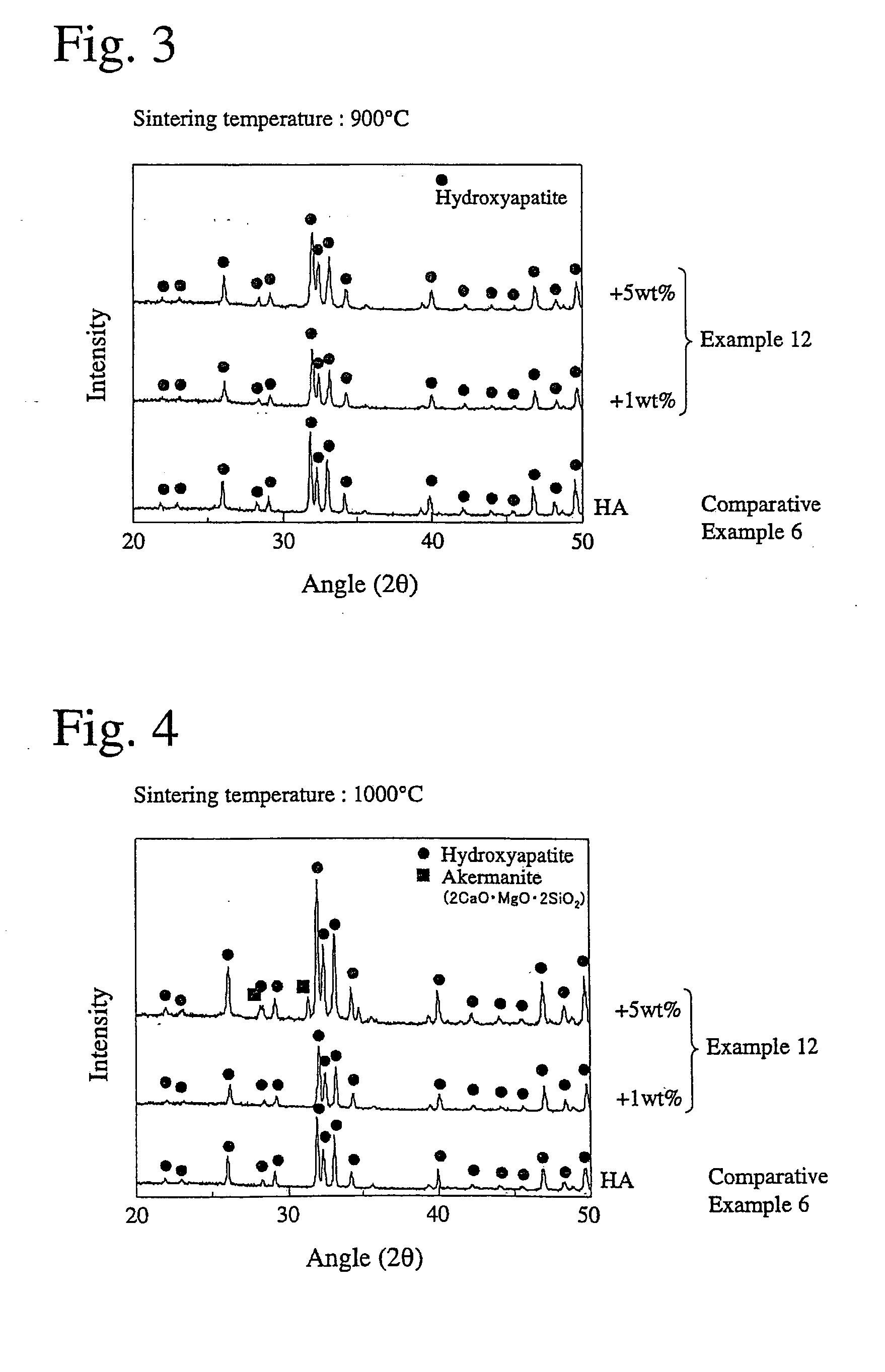CaO-MgO-SiO2-based bioactive glass and sintered calcium phosphate glass using same
a bioactive glass and sintered calcium phosphate technology, applied in the direction of prosthesis, impression caps, applications, etc., can solve the problems of low mechanical strength, inability to produce dense biocompatible implants, and inability to generate preferable crystals by sintering at temperatures lower than the decomposition temperature of carbonated apatites, etc., to achieve the effect of increasing the fracture toughness of sintered calcium phosphate glass
- Summary
- Abstract
- Description
- Claims
- Application Information
AI Technical Summary
Benefits of technology
Problems solved by technology
Method used
Image
Examples
example 1
[0046] 34.1 mol % of CaCO3 powder, 50.0 mol % of SiO2 powder, and 15.9 mol % of MgO powder were mixed as shown in Table 1, and the resultant material powder mixture was melted at 1,560° C. for 1 hour or more to produce a bioactive glass ingot having a uniform composition.
examples 2 to 11
[0047] Each material powder mixture having a composition shown in Table 1 was melted at 1,400 to 1,560° C. for 1 hour or more to produce a bioactive glass ingot having a uniform composition.
TABLE 1Composition (mol %)No.CaOSiO2MgOCaF2P2O5Na2OB2O3Example 134.150.015.9————Example 233.650.015.90.5———Example 333.150.015.91.0———Example 432.150.015.92.0———Example 531.150.015.93.0———Example 633.749.515.8——1.0—Example 733.749.515.8———1.0Example 832.450.516.1—1.0——Example 931.849.515.72.01.0——Example 1031.449.015.62.0—1.01.0Example 1131.849.515.72.0—0.50.5
example 12
[0052] The bioactive glass ingot of Example 4 was pulverized into particles having an average particle diameter of 1 to 2 μm. The bioactive glass particles were added in proportions of 1% and 5% by mass, respectively, to 100% by mass of agglomerated particles of hydroxyapatite nano-particles (available from Pentax Corporation, average diameter 15 μm). Each resultant mixture was wet-blended using isopropyl alcohol and zirconia balls, and dried to obtain powder for sintering. 0.2 g of each of the powders having different bioactive glass contents was placed in a stainless steel die, and uniaxially press-molded and cold-isostatic-pressed (CIP) to produce a disc-shaped green body having a diameter of 10 mm and a thickness of 2 mm. Each green body was sintered at 800° C. for 1 hour and at 900° C. for 4 hours, and cooled in a furnace to produce a sintered hydroxyapatite. The heating rate in the sintering was 5° C. / min. Further, sintered hydroxyapatite bodies were produced in the same manne...
PUM
| Property | Measurement | Unit |
|---|---|---|
| Glass transition temperature | aaaaa | aaaaa |
| Glass transition temperature | aaaaa | aaaaa |
| Crystallization enthalpy | aaaaa | aaaaa |
Abstract
Description
Claims
Application Information
 Login to View More
Login to View More - R&D
- Intellectual Property
- Life Sciences
- Materials
- Tech Scout
- Unparalleled Data Quality
- Higher Quality Content
- 60% Fewer Hallucinations
Browse by: Latest US Patents, China's latest patents, Technical Efficacy Thesaurus, Application Domain, Technology Topic, Popular Technical Reports.
© 2025 PatSnap. All rights reserved.Legal|Privacy policy|Modern Slavery Act Transparency Statement|Sitemap|About US| Contact US: help@patsnap.com



